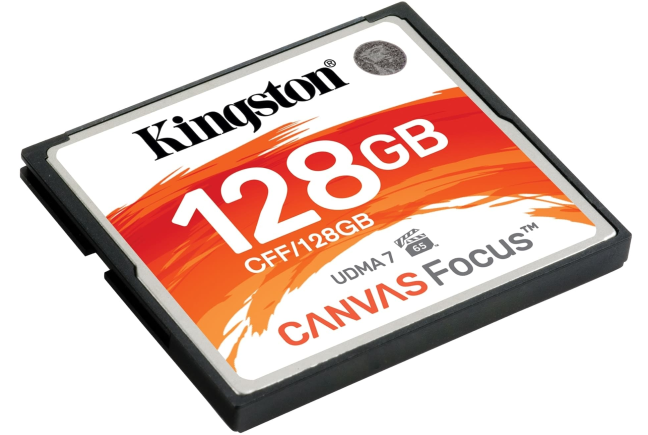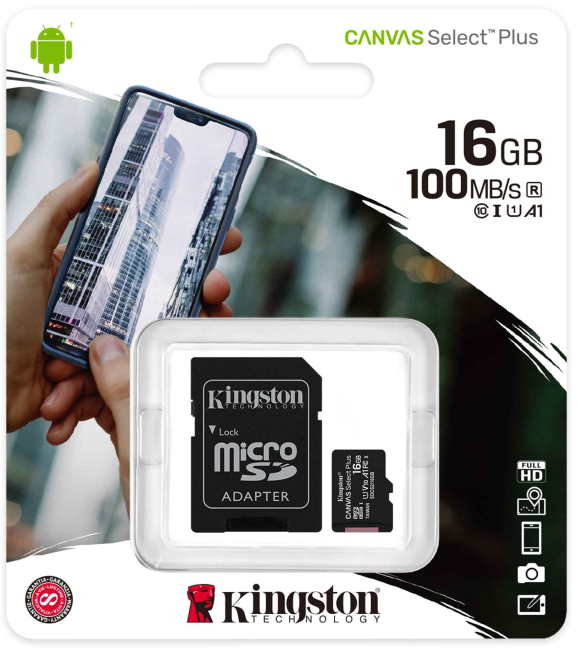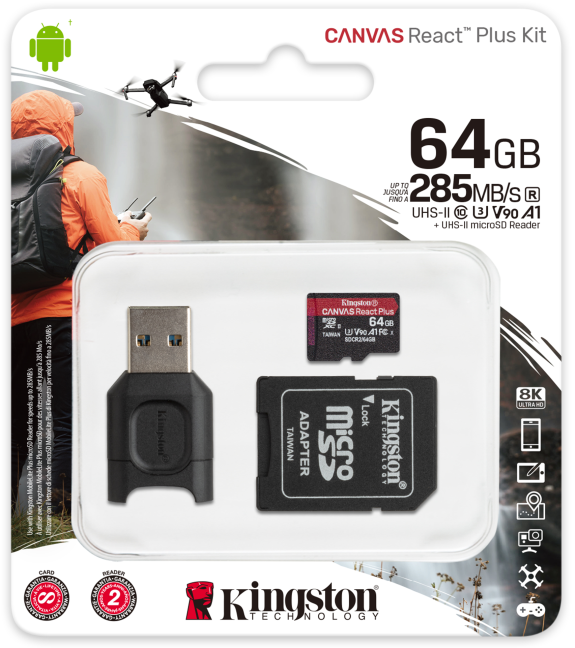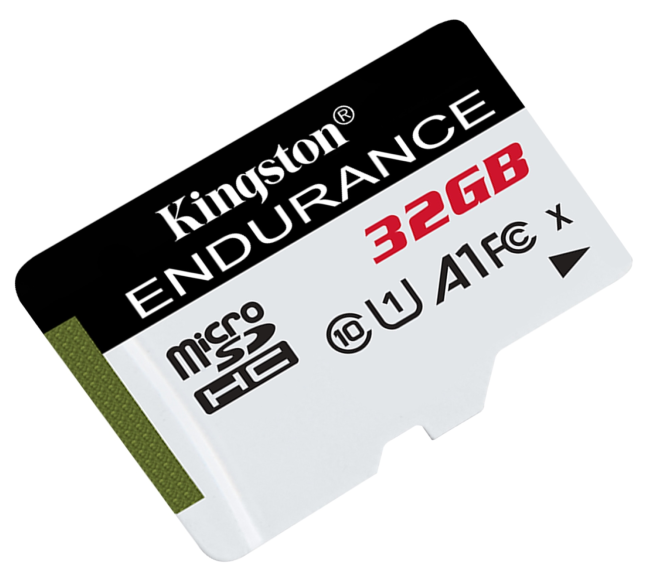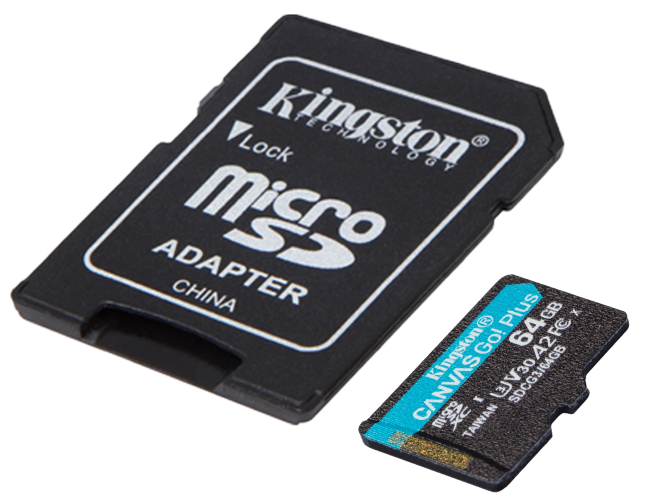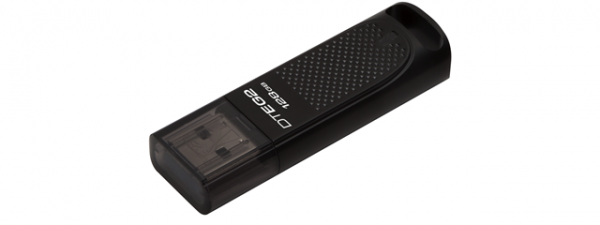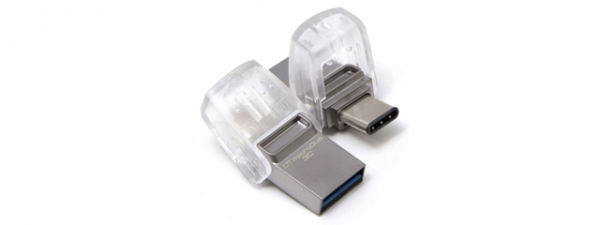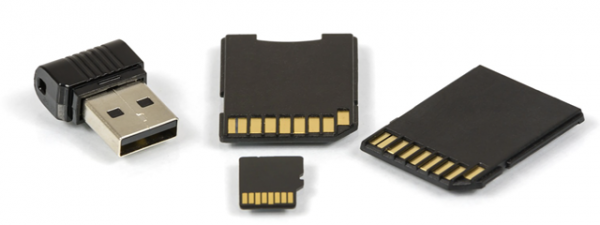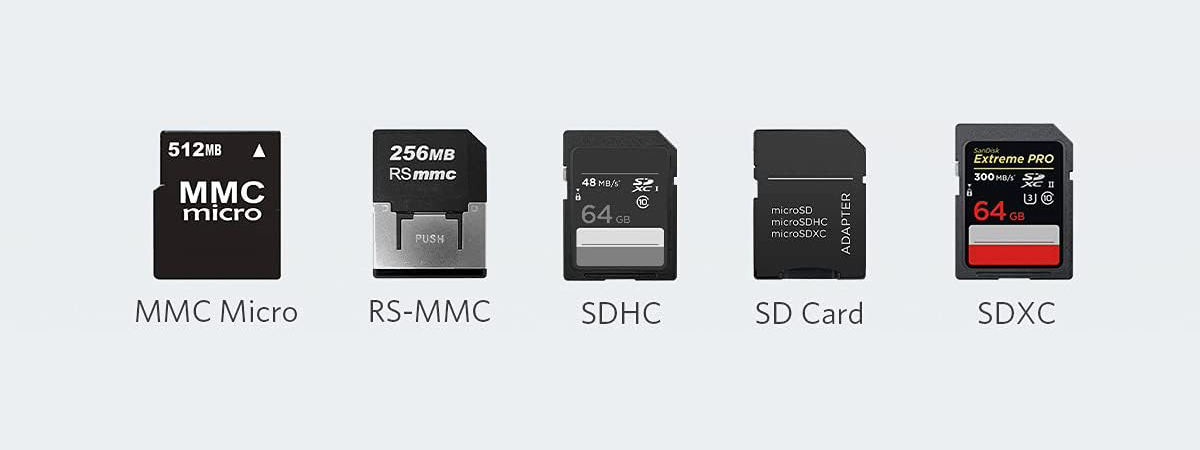
Memory cards are found inside all kinds of devices: professional DSLR cameras, surveillance cameras, dash cams, smartphones, tablets, and laptops. We even use them for Nintendo Switch consoles. Some devices (like digital cameras) require a memory card for their primary storage. Others (like tablets and smartphones) need them to increase their storage space. Memory cards are available in many sizes, formats, speeds, and storage capacities. Making sense of everything may feel daunting. To help you out, we have created this guide that covers the most important criteria to consider when buying your next memory card:
NOTE: This guide covers the basic principles involved when choosing the best memory card for your needs, applied to Kingston's portfolio.
1. The type and physical size of the memory card
First of all, clarify what type of memory card you need. It depends on the device(s) in which you're planning to use the memory card. You may have a DSLR camera that works only with CompactFlash cards, like Kingston's Canvas Focus CompactFlash.
You may need a versatile SD card that can be used both in the standard SD format and microSD, like Kingston's Canvas Go! Plus microSD. Such cards can be plugged into multiple devices like digital cameras, tablets, and smartphones.
Memory cards come in different types and sizes: Compact Flash, SD, miniSD, microSD, and so on. To familiarize yourself, and understand the differences between them, read: What are the different types of memory cards? What do their specs mean?
2. Storage space
Before purchasing your next memory card, read the user manual of the device where you are going to plug it and see the maximum storage capacity that is supported. Different devices from different manufacturers work with specific maximum sizes for memory cards. Your smartphone may work with a memory card of maximum 256 GB, while your older digital camera may accept a maximum size of 32 GB. On the other hand, your laptop may work with memory cards up to 1 TB. You don't want to waste your budget on purchasing a memory card with a capacity that is not accepted by the device(s) where you plug it.
Our recommendation is to choose a memory card that has a capacity of at least 32 GB. This storage size works with all devices, and it ensures that you have enough space for storing all kinds of things: pictures, videos, apps, files, and so on. Kingston, as well as other manufacturers, has many storage options available, from 16 GB up to 512 GB or more. The perfect size varies based on what you plan to do with the memory card and the specifications of the device(s) you're using it in.
If you are a casual user who needs a memory card for a smartphone or a point and shoot camera, 32 GB or 64 GB should be enough. If you plan to store files and extend the storage on your laptop or tablet, choosing a card with 128 GB or more is a better idea. A card like Kingston's Canvas Select Plus is a suitable choice for casual users who don't have specific needs. It offers plenty of storage capacities and good overall performance.
However, if you plan to shoot large 4K videos, you may want something like Kingston Canvas React MicroSD with 256 GB or 512 GB of storage space that has both a large size and a higher speed. And this leads us the next criteria to consider when buying a memory card:
3. Speed
The speed of a memory card is important for professionals with specific needs. For example, if you do 4K/8K video production using professional cameras, drones, or action cameras, you should choose a memory card with a high-speed V90 class, like Kingston Canvas React Plus.
The same applies if you're a professional photographer taking photos in rapid succession on a DSLR camera and saving them in high-resolution RAW format. This card has excellent transfer speeds of up to 285MB/s and recording speeds of up to 165MB/s. It even bundles a MobileLite Plus microSD Reader to quickly transfer your work to your laptop or PC.
For most consumers, the speed of the memory card is not that important, and any consumer card from Kingston's portfolio should be a suitable choice.
4. Endurance
If you plan to use a memory card in an industrial environment or inside consumer devices, like an action camera, a dash cam, or a nanny cam, then you should consider endurance as a criterion of selection. You may need a memory card that can function in desert heat or below freezing conditions, in high humidity environments, and so on. They may also need to resist shock, water, or x-rays. For consumers, Kingston offers its High-Endurance MicroSD Memory Card.
It is an excellent choice for outdoor enthusiasts who record their adventures using an action camera, for parents who use a nanny cam to supervise their children remotely, or for drivers using a dash cam that has to endure lots of direct sunlight or below freezing temperatures.
For industrial environments, when endurance is a must, Kingston offers its Industrial-Temperature MicroSD UHS-I Memory Card.
5. Performance class for apps
If you want to use your memory card inside a smartphone, tablet, or laptop, and install apps on it, it is a good idea to choose a memory card with an A1 or A2 application performance class.
Such memory cards are optimized to work with mobile apps and provide the necessary responsiveness and speed users expect. You can choose between Kingston Canvas Go! Plus microSD and Canvas React Plus microSD.
6. Warranty
Another aspect to consider is the warranty for the memory card that you want to buy. Some models have a warranty of 2 years, others of 5 years, while others come with a lifetime warranty. A difference between less known brands and established ones, like Kingston, is that the latter tend to offer extended warranty periods. For example, most memory cards from Kingston, like the consumer-friendly Canvas Select Plus microSD Card, have a lifetime warranty.
7. Price
Most people have a limited budget, and choosing a memory card that has generous storage, high speed, endurance, and a long warranty, may turn out to be expensive. That's why it is a good idea to identify the features that are most important to you and choose the memory card that offers the best balance between your budget and the characteristics you want it to have.
Which memory card did you buy?
We hope that by the end of this guide, choosing the best memory card for your devices is no longer an issue. Did you find a model that is suitable for your needs without breaking the bank? Before closing, tell us which specific memory card you have bought and why.


 21.05.2020
21.05.2020 